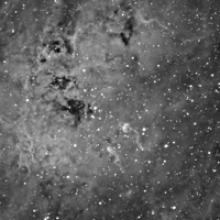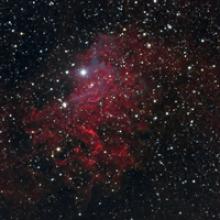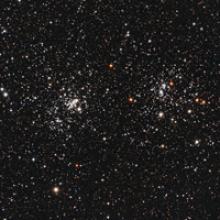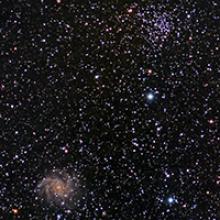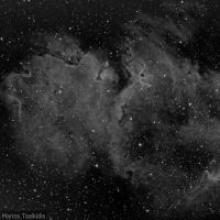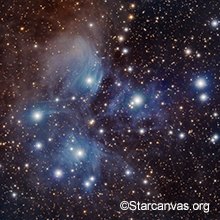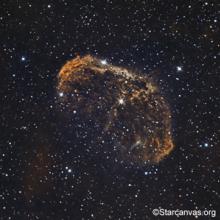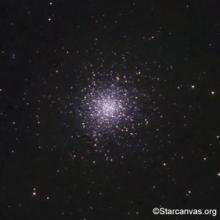The nebula known as IC 410 is home to a pair of intriguing structures popularly known as the "tadpoles." These are clumps of gas and dust left over from the formation of the cluster, and are likely forming yet new stars within them.
SBIG8300M
The Flaming Star Nebula (also known as the IC 405, SH 2-229, or Caldwell 31) is an emission/reflection nebula in the constellation Auriga, surrounding the bluish star AE Aurigae.
The Double Cluster (Caldwell 14) is the common name for the naked-eye open clusters NGC884 and NGC869 (often designated Chi Persei and H Persei, respectively), which are close together in the constellation Perseus.
NGC 6946, (also known as the Fireworks Galaxy, Arp 29, and Caldwell 12), is an intermediate spiral galaxy about 18 million light-years away, in the constellations Cepheus and Cygnus. It was discovered by William Herschel on September 9, 1798.
Westerhout 5 (Sharpless 2-199, LBN 667, Soul Nebula) is emission nebulae in Cassiopeia. Several small open clusters are embedded in the nebula: CR 34, 632, and 634 (in the head) and IC1848 (in the body).
The cluster contains hundreds of stars, of which only a handful are commonly visible to the unaided eye.
The Crescent Nebula is a beautiful emission nebula in the constellation Cygnus, about 5000 light-years away. Also known as NGC 6888, Caldwell 27, Sharpless 105.
Other popular names in astronomy for the Hercules Globular cluster are : Messier 13 (M13) and NGC 6205. M13 was discovered by Edmond Halley in 1714, and catalogued by Charles Messier on June 1, 1764.
